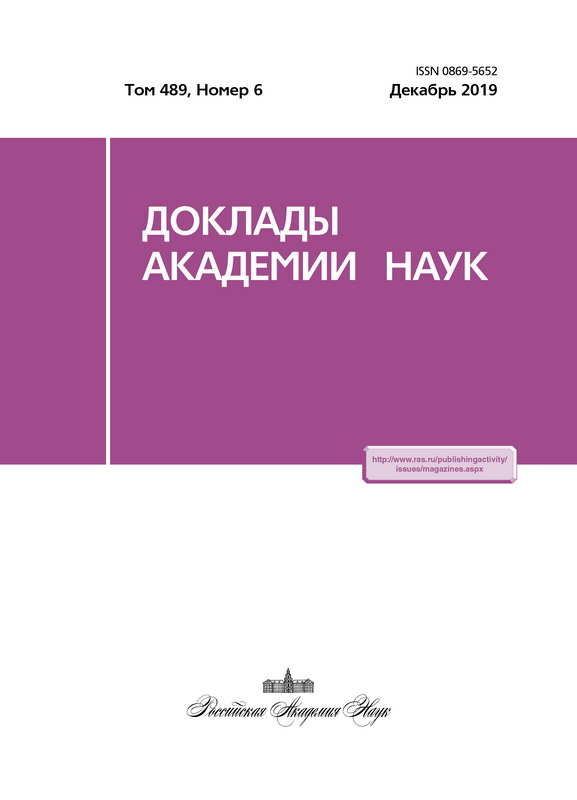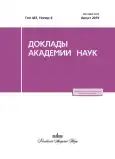Изменение гидрологического режима северных рек как индикатор изменения криологических условий
- Авторы: Мельников В.П.1,2, Пикинеров П.В.3, Геннадиник В.Б.2, Бабушкин А.Г.1, Московченко Д.В.4
-
Учреждения:
- Институт криосферы Земли Тюменского научного центра Сибирского отделения Российской академии наук
- Тюменский государственный университет
- Тюменский индустриальный университет
- Институт проблем освоения Севера Тюменского научного центра Сибирского отделения Российской академии наук
- Выпуск: Том 487, № 6 (2019)
- Страницы: 679-683
- Раздел: География
- URL: https://journals.eco-vector.com/0869-5652/article/view/15978
- DOI: https://doi.org/10.31857/S0869-56524876679-683
- ID: 15978
Цитировать
Аннотация
Исследовано новое явление - рост стока северных рек в зимний и ранневесенний периоды. Из предположения, что причиной эффекта является деградация вечной мерзлоты в бассейнах рек, сделана оценка скорости деградации различных зон распространённости многолетнемёрзлых пород (ММП). Математическая модель, учитывающая типизацию зон ММП, отражающая зависимость стока от криологических условий водосбора, показала ускоренную деградацию островной мерзлоты и рост доли прерывистой мерзлоты за счёт интенсивного перехода в это состояние участков сплошной мерзлоты.
Ключевые слова
Об авторах
В. П. Мельников
Институт криосферы Земли Тюменского научного центра Сибирского отделения Российской академии наук; Тюменский государственный университет
Email: pavel@gisi.ru
Академик РАН
Россия, 625026, г. Тюмень, ул. Малыгина, д.86; 625003, г. Тюмень, ул. Володарского, д.6П. В. Пикинеров
Тюменский индустриальный университет
Автор, ответственный за переписку.
Email: pavel@gisi.ru
Россия, 625000, г. Тюмень, ул. Володарского, д.38
В. Б. Геннадиник
Тюменский государственный университет
Email: pavel@gisi.ru
Россия, 625003, г. Тюмень, ул. Володарского, д.6
А. Г. Бабушкин
Институт криосферы Земли Тюменского научного центра Сибирского отделения Российской академии наук
Email: pavel@gisi.ru
Россия, 625026, г. Тюмень, ул. Малыгина, д.86
Д. В. Московченко
Институт проблем освоения Севера Тюменского научного центра Сибирского отделения Российской академии наук
Email: pavel@gisi.ru
Россия, 625026, г. Тюмень, ул. Малыгина, д.86
Список литературы
- Атлас снежно-ледовых ресурсов мира / Под ред. В. М. Котлякова. М.: РАН, 1997. 392 с.
- Павлов А. В., Гравис Г. Ф. Вечная мерзлота и современный климат // Природа. 2000. № 4. С. 10-18.
- Соловьев И. Г., Пикинеров П. В., Шмелева Т. А. Математические методы контроля нефтезагрязненности водотоков на месторождениях с длительными периодами ледостава. I. Модель // Криосфера Земли. 2008. Т. XII. № 2. С. 25-31.
- Adam J. C., Lettenmaier D. P. Application of New Precipitation and Reconstructed Streamflow Products to Streamflow Trend Attribution in Northern Eurasia. // J. Climate. 2008. V. 21. P. 1807-1828. DOI: 10.1175/ 2007JCLI1535.1.
- Frey K. E., McClelland J. W. Impacts of Permafrost Degradation on Arctic River Biogeochemistry // Hydrol. Process. 2009. V. 23. P. 169-182. http://dx.doi.org/10.1002/hyp.7196
- Karlsson J. M., Jaramillo F., Destouni G. Hydro-Climatic and Lake Change Patterns in Arctic Permafrost and Non-Permafrost Areas // J. Hydrol. 2015. V. 529. P. 134-145.
- Rawlins M. A., Steele M., Holland M. M., et al. Analysis of the Arctic System for Freshwater Cycle Intensification: Observations and Expectations // J. Climate. 2010. V. 23. P. 5715-37.
- Rowland J. C., et al. Arctic Landscapes in Transition: Responses to Thawing Permafrost. EOS. 2010. V. 91. P. 229-230. http://dx.doi.org/10.1029/ 2010EO260001
- Shiklomanov A. I., Lammers R. B., Rawlins M. A., Smith L. C., Pavelsky T. M. Temporal and Spatial Variations in Maximum River Discharge From a Bew Russian Dataset // J. Geophys. Res. 2007. V. 112. http://dx.doi.org/10.1029/2006JG000352
- White D., et al. The Arctic Freshwater System: Changes and Impacts // J. Geophys. Res. 2007. V. 112. G04S54. http://dx.doi.org/10.29/2006JG000353
- Zhang T., Serreze M. C., Yang D., Gilichinsky D., Etringer A., Ye H., Barry R. G., Chudinova S. M. Permafrost Degradation and Hydrologic Response in the Russian Arctic Drainage Basin // Geophys. Res. Abstr. 2003. V. 5. Abstract 12990. http://www.cosis.net/abstracts/EAE03/12990/EAE03-J 12990.pdf
Дополнительные файлы








